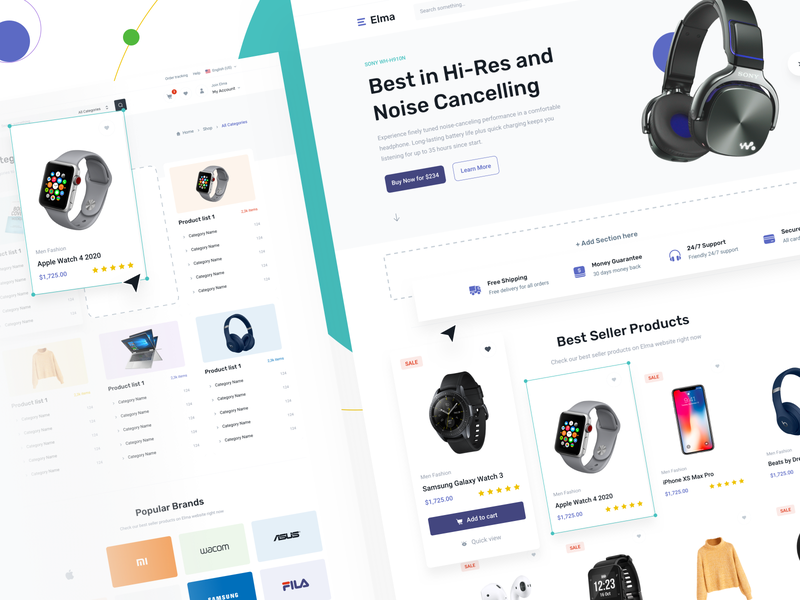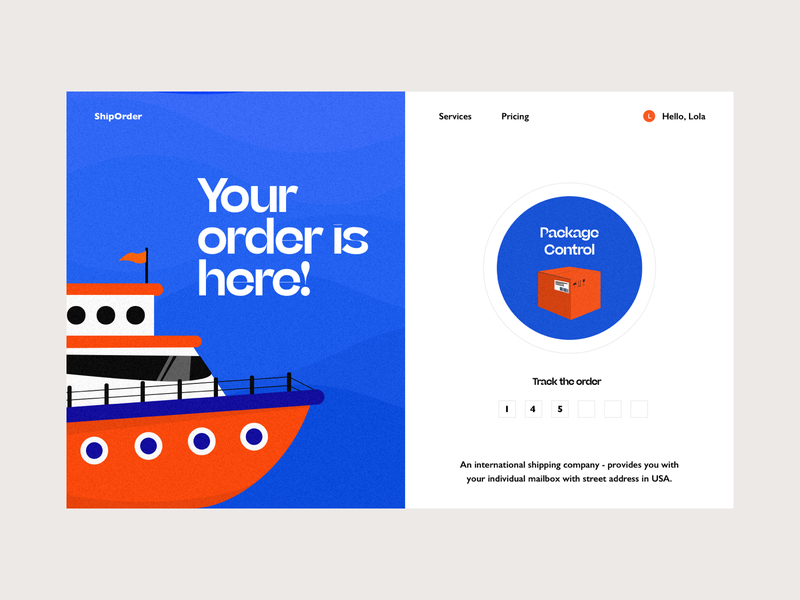Beating Amazon’s Delivery Times As A Small Business Owner: Challenging the Big Players

It’s no secret — Amazon delivers products to their customers fast.
Even without Prime, they offer delivery times that were previously unheard of in the world of e-commerce, and in most of the world as a whole. With Prime’s free two-day shipping, they seem unstoppable. They’ve built the infrastructure and the relationships necessary to dominate the online marketplace. What’s a small business owner to do? How can you compete with a behemoth like Amazon?
It turns out, quite a lot. You don’t need enormous market clout or million-dollar investments to beat Amazon at their own game. Every day, small brands are hustling to challenge retail giants by rethinking common assumptions. Because throwing money at the problem is only one solution. Ingenuity, tenacity, and an unrelenting focus on your goals can overcome shortcomings in capital, plant, and name recognition.
The good news is that the little guy still has a chance. Here’s how you can take a bite out of the big players.
Partnering with other e-commerce brands
Sure, everyone in e-commerce sells online. But that doesn’t mean they’re your competition. If business A sells sporting equipment while business B sells home furnishings, there’s no reason they can’t join forces to help beat out the larger players.
That’s precisely what services like Deliverr, ShipBob, and Flexe are offering. These third-party logistics companies have warehouses strategically placed around the United States to compete with Amazon’s ubiquitous presence. They handle fulfillment for hundreds of smaller e-commerce brands, allowing you to offer delivery times that are competitive with Amazon and other massive online retailers.
By opening up large-scale fulfillment, these services are amassing a large enough share of the e-commerce space to offer competitive two-day shipping. When you can’t beat them on price or scale, you overwhelm them by sheer numbers.
FedEx and UPS are also offering fulfillment services, leveraging their considerable warehousing space and established shipping services. Called FedEx Fulfillment and Ware2Go respectively, the two companies are working to reinvigorate their delivery businesses by leveling the playing field for smaller e-tailers. This does a few things besides speed your products to your customers:
It reduces cart abandonment
Consumers don’t like sticker shock. When they load up a cart, go to check out, and discover a high shipping charge they weren’t expecting, it can turn them off. Abandoned carts mean lost revenue. While you may not beat Amazon on shipping costs, as long as your rates are reasonable and your shipping is fast, a larger percentage of your customers will complete their sales.
It cuts down on labor costs
Instead of paying employees to fulfill your products (or doing it yourself), you can shift the responsibility to a fulfillment service. Similar to Amazon, they have systems in place to fulfill more efficiently, saving you time, money, and effort.
Capture more customers
Let’s face it. Customers are coming to expect products in two days. And if they aren’t Prime customers, they still expect cheap, fast shipping. If you can provide what they’re looking for, they’ll be happy to buy from you. You can even take advantage of the growing anti-Amazon sentiment by offering comparable service. The fact that you aren’t Amazon is a point in your favor!
Increase your average order value
Try offering free shipping over a certain dollar amount. People are willing to buy more if they know they’ll save on shipping charges. You might take a bath at the shipping costs, but you’ll make up for it with additional purchase revenue.
Beating Amazon at their shipping game isn’t easy, but it can be done. And there are more ways than zippy shipping to knock larger competitors down a peg. If you’re a shrewd, agile marketer, you can use the rules of the game against them.

Growing your traffic with smart SEO
Nine years ago, Gymshark was a dream bubbling around the brain of a 19-year-old kid from Britain. Six months later, he was building the business in his parent’s garage. Today, his online athleisure brand is valued at nearly two billion dollars and controls a greater share of the UK market than other, long-established brands.
How did they do it? They took advantage of the tools available to them. The company undertook a scorched earth SEO campaign highly-optimized for UK-specific athleticwear keywords that giants like Reebok and Adidas largely ignored. They were so successful that at one point, the company was pulling more than half of the organic traffic for certain competitive search terms.
SEO is a slow burn strategy, but once it catches fire, it’s possible to see geometric growth rates in search volume and traffic. Some of the benefits include:
Free search exposure
There are two ways to appear on the first page of Google listings — PPC (pay per click) advertising and organic search. The first can be difficult for small brands to use effectively because of the investment required. Organic, by contrast, is free, particularly if you’re doing your own optimization. While it’s smart to invest a small sum in keyword and other SEO tools, the overall investment is relatively low, allowing small brands to compete with entrenched deep pockets.
Consistent traffic
PPC is an excellent way to drive traffic to your e-commerce store, but it only lasts if you keep spending. Effective SEO practices, by contrast, create a reliable stream of traffic that isn’t dependant on ad spends. It does require constant vigilance, but that’s something that small startups have in spades.
Build brand credibility
Paid ads on Google are prepended by the word “Ad”, which immediately makes them less trustworthy in consumers’ eyes. Organic search doesn’t suffer this deficit and is viewed as more reliable, which translates to a more credible brand experience.
Of course, SEO wasn’t the only strategy Gymshark pursued. They were also one of the first brands to embrace influencer marketing because a multichannel approach is always more effective than concentrating in one area. PPC and SEO complement each other, and each has its place. But for smaller e-commerce brands that lack the capital required for expensive advertising channels, SEO is a great starting point.
Heul, the vegan meal replacement company, went the other direction, opting for a targeted PPC approach. Let’s see how they did it.
Be ruthless with your PPC!
Huel and Soylent are the two largest meal replacement shake companies in the world. However, Soylent had a full year head start on its rival, developing significant name recognition before Huel opened its doors. So how did the upstart overtake the market leader?
Huel concentrated its marketing dollars on a novel PPC campaign that sought to divert traffic away from its entrenched competition. With laser focus, they bid on keywords that included “Soylent” in an attempt to wrest ownership of the keyword from its namesake — and it worked.
Between 2017 and 2019, nearly 93% of paid traffic containing the word “Soylent” went to Huel’s website instead of Soylent’s. Read that again — 93%! As a result, Soylent’s web traffic dropped by 70% within the same period while Huel’s climbed dramatically, eventually surpassing their rival.
If standard pay per click advertising is a friendly competition, Huel’s approach was an attack straight for the jugular. With a concerted effort, they cut off their rival’s main source of web traffic. Was it more expensive than SEO? Almost certainly. But the dramatic shift in market share made the move extremely affordable in the long run. Some of the benefits to be had from a focused PPC campaign are:
Top-of-the-Page Positioning
SEO alone can get you onto the first page of search listings, but it doesn’t guarantee you the top spot. Only paid placements enjoy that benefit. And you get the first page every time. With PPC, your search entry will be the first thing potential customers see. Pair this with a catchy title and meta-description, and the top spot can help you dominate search traffic.
A more targeted approach
SEO lets you suggest to search engines which terms are most relevant for your brand. Paid ads specify them exactly. You decide which words you want to bid on and how much you’re willing to pay. This specificity is what allowed Huel to “steal” Soylent’s own name from them. You can set your budget and every other relevant parameter to target the traffic you’re after precisely.
Greater visibility
With organic search, you get a simple, text-based entry. With PPC, you can add images, locations, pricing information, and other details. They’re ads, after all, whereas organic search entries are just links to a website. For an e-commerce brand, the ability to specify extra details, particularly visual information, can be a game-changer.
You Can Beat the Big Guys at Their Own Game!
It sometimes seems that the deck is stacked against the little guy — and that’s because it is. Entrenched interests have an unfair advantage due to their resource dominance, market position, and name recognition.
But this often comes with a certain complacency. The big guys are used to winning, so they take the game for granted. That’s where you should focus. Look for strategies that dominant players are ignoring. You may not have a lot of capital, but you have drive, ambition, and creativity, and sometimes that’s all it takes. So grab your slingshot, David, and hunt yourself a Goliath.

